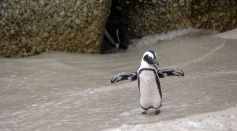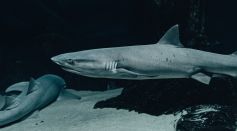ENVIRONMENT & CLIMATE

Rhodes Island Fires Push 30,000 People To Move to Safety Amid Record-Breaking Heat Wave

Oldest Curry Believed To Be From Southeast Asia With Evidence Going Back 2,000 Years

'Immortal Jellyfish' Accomplishes Effective Age Reversal, Making It Theoretically Live Forever
Zebrafish in Space? China Pioneers Experiment on Tiangong Space Station, Hoping To Mitigate Bone Loss in Astronauts

240 Million-Years-Old Fossils of New Scorpion Species Discovered in Milan Museum

World’s Sunniest Spot: Atacama Desert in Chile Catches Rays That Are As Many as Venus, Has the Same Radiation As the Brightest Planet

Meat-Eating Leads to 4x Higher Greenhouse Gases Compared to Vegan Diets, Study Reveals

2,000 Penguins Wash Up Dead on Uruguay Coast, Cause Still a Mystery
Video Footage of Iceland’s Baby Volcano Shows the Collapse of Its Crater, Releasing ‘Spatter Bombs’ of Lava Into the Air

NASA Scientist Warns of Record-Breaking Heat: July Could Be Hottest Month in Centuries

Cocaine Sharks: Scientists Think These Apex Predators Could Be Feasting on Bales of Drugs Dumped in the Ocean

History's Greatest Explosions That Have Left People in Wonder and Terror

Could Sharks Be Itching To Feed on Humans Even More? Experts Explain Why Shark Attacks Seem To Be Rising

Curcumin Shows Promising Results in Shielding Coral from Climate Change-Induced Damage
Most Popular

10 Weird Things the Human Body Does—and the Science Behind These Biological Mysteries

Why Mega Typhoons Keep Getting Stronger: The Science Behind Typhoon Formation and Extreme Weather

Top Space Technology Trends and Aerospace Innovations Revolutionizing the World Today

How Plate Tectonics Trigger Earth's Most Dangerous Disasters Through Powerful Seismic Hazards





